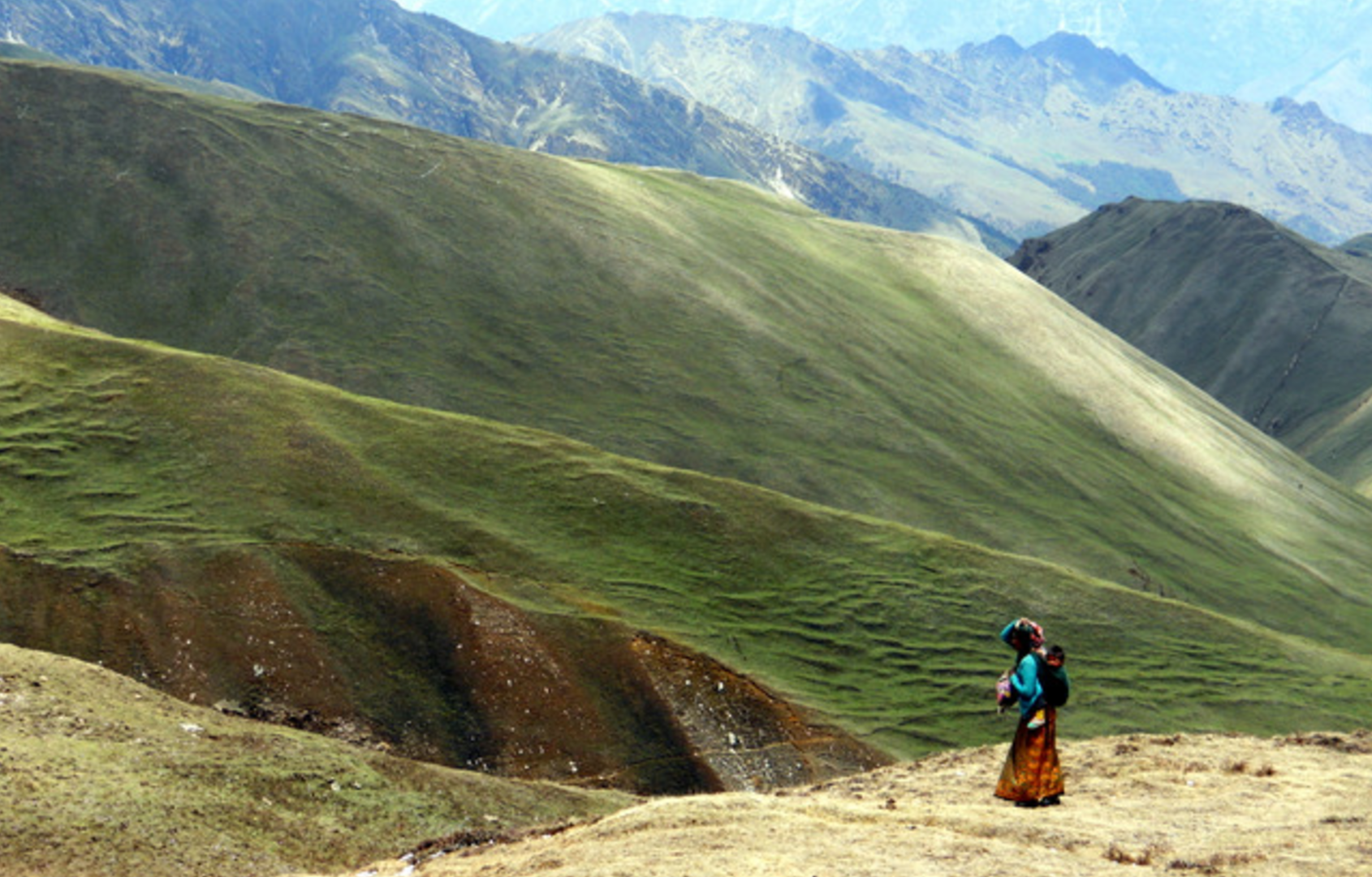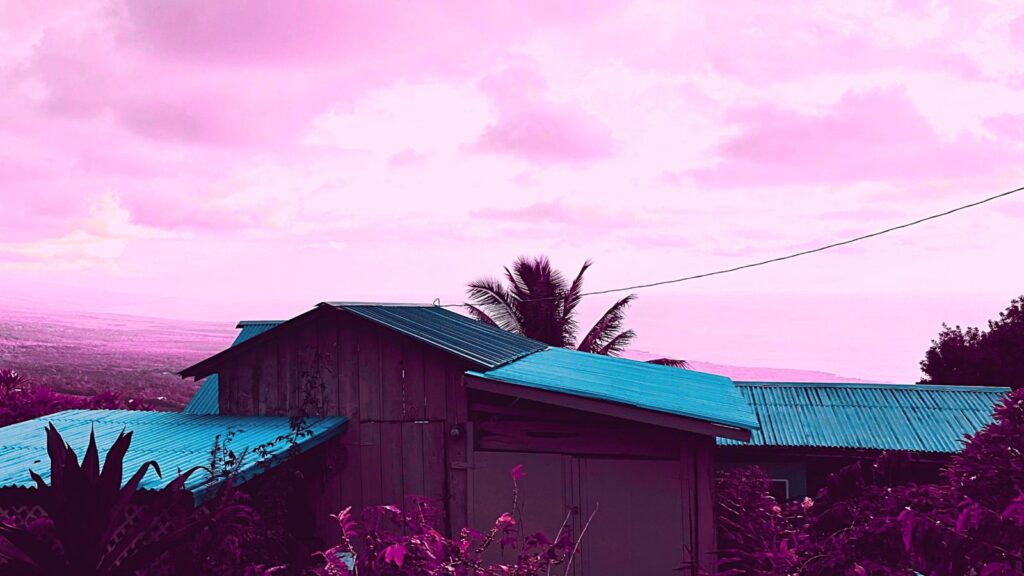Crowds of Nepalese are caravanning to remote Himalayan meadowlands in the cool springtime after the snow melts. They ascend on foot carrying their own gear and supplies and then scour the inhospitable alpine highlands. The aim is extracting one of the most precious commodities on earth. At times, foragers crawl on hands and knees to locate and harvest a coveted prize. The yield is subsequently dispatched from uninhabited windswept mountain slopes to posh emporiums in overflowing metropolises of Asia, primarily China, and beyond.
The prized specimen is a fungus in the peculiar form of a caterpillar. This rare Himalayan meadow mushroom is known regionally as yarsagumba or simply yarsa. Consuming the petrified caterpillar cum fungus is supposed to raise a person’s vitality, particularly behind closed bedroom doors—paint your own steamy images. After all, for people with nearly everything that money can procure, why not try to buy health and extra pizzazz if it is for sale?
Unbelievably, this mushroom from secluded highlands is one of the highest-value items that can be traded this side (and the other side) of Goddess Chomo-Miyo-Lang-Sangma (the Sherpa name for Mount Everest) and mostly by aging men for effects that still are without much proper scientific corroboration. Dubious studies have been commissioned by manufacturers, mostly of supplements containing pulverized yarsagumba, and cited as evidence of a miraculous product. Consumers are largely unaware of the flaws of such studies tainted by confirmation bias of paid researchers.
The fungus is sometimes referred to as Himalayan Viagra, a catchy name that lends heavily to its popularity. Although a comparison to the popular pharmaceutical is questionable, this natural commodity from Himalayan highlands has been known to sell for more than $100,000 per kg (> $45,000 per lb) in high-end Shanghai dispensaries. Total worldwide sales are now estimated to exceed $11 billion per annum. In the last decade, the market price has amplified more than 20-fold and greater than 200 tons are traded per year.
Consumption is also driven by desires of China’s nouveau riche to be fashionable. Yarsagumba is a status symbol and is sometimes provided by hosts at extravagant parties and given as gifts to bosses and government officials to curry favor in lieu of forbidden cash—yet can be readily parlayed into cold cash.
Known as dong chong xia cao in Chinese, the fungus is also referred to as Himalayan Gold for its boom in popularity and high value that has ignited a modern-day goldrush in far-flung hills. The name in Tibet is often shortened to bu which means ‘insect’; the longer name is yartsa (summertime grass), gunbu (wintertime insect) for the transformation local people observe over that period. Gatherers in Nepal refer to it simply as chyaau (mushroom).
Yarsagumba comes from the hibernating caterpillar larva of the Thitarodes moth that is mummified after its insides are eaten-up by the mushroom fungus Ophiocordyseps sinensis. The parasitic fungus fills the space of what it has gorged on and leaves only the critter’s outer shell intact—thus giving the curious appearance of a caterpillar to a mushroom.
The dried, shrunken caterpillar-shaped fungus is generally ground up before human consumption. Its powder is sprinkled on food and mixed into drinks as a tonic. Sometimes a whole specimen is plopped into soup or a broth. Nowadays, yarsagumba is even fed to ducks and chickens and believed to permeate their blood and flesh. Meat of these slaughtered fowl thus commands a higher value.
Entrepreneurs are even cultivating fungal spores on cereal grains and synthesizing it in laboratories. The naturally-found field mushroom in the form of a petrified caterpillar eclipses other types in popularity, and over 95% of global supply is mined from upland slopes on the Tibetan Frontier.
As early as the 15th century yarsagumba was mentioned glowingly in Tibetan medical literature. It appears in traditional Chinese medicine as early as the 17th century. In modern times, it achieved prominent headlines when unheralded Chinese runners broke five world records by implausible margins at a single event in Beijing in 1993. Their coach partially attributed the record-setting to this highland meadow mushroom mixed into an elixir of turtle’s blood of all things (Count Dracula and his ghoulish flunky Renfield would be drooling).
Although, yarsagumba does not contain banned substances, when testing became standard and more rigorous, this coach’s athletes withdrew from the Sydney Olympics rather than face checks for doping and performance enhancing substances. Regardless of the doubt this spread over the yarsagumba claims, enthusiasm for this mushroom had been sewn and has increased exponentially.
The market value, too, has been skyrocketing although price fluctuations are affected by seasonal stocks which in turn are dependent on year-to-year precipitation variations, too, among other seasonal variables.
In the springtime, following the snowmelt in the highlands, people residing in relatively warmer fertile hills and valleys ascend in droves and often with children in tow. The bone-chilling climate of winter is still fresh on the frosty breath of spring while some of the snow pack remains in remote slopes of Manang, Manaslu, Dhading, Rukum, Dolpo and Jumla districts and beyond. Foragers often arrive to these uplands without sufficient food, clothing and gear yet are ready to endure whatever is to come.
Income is to be had and tent cities emerge almost overnight after caravans roll in and the great hunt begins. Shops, restaurants, bars and even makeshift movie halls keep the crowd supplied and entertained. Feverish gambling heats up in the evenings after the day’s hunt and harvesters flush with hard-won rupees aim to increase their pelf against the odds. There are no shortage of hustlers ready to fleece them on a roll of the dice or flip of a card.
For weeks, from sunup to sundown, valiant troops hunt the high meadowlands, crouching while slowly crisscrossing slopes, staring intently at the ground as if stalking invisible, tiny prey in a Himalayan coliseum—often crawling on all fours while gazing steadily at the ground for buds of the fungus that have emerged through the soil.
The natural life cycle of their prize begins at about 3000 m (9843 ft) and above in alpine grasslands. Moth larvae burrow underground intending to form a cocoon and nest in the earth for up to six years. Fungal spores released by mature fungi in the autumn are also in the soil. These reproductive microorganisms permeating the soil are what invade the larvae hosts. Eventually, a sprout arises out of the head of the buried and mummified caterpillar and shoots up through the earth.
The bud sprouting up is what foragers are searching for, and it is not easy to find as it blends in with the scrub vegetation covering dusky slopes. When a sprouted blade is detected, the mummified caterpillar entombed below is unearthed by delicate hands with special attention at keeping whole specimens intact as their highest value depends on it.
If the fungus had been left undisturbed in the ground to mature, eventually the fruiting mushroom stalk would release spores in the autumn to perpetuate the cycle outlined above. In fact, unverified reports of a decreasing yield of yarsagumba have been attributed to over-harvesting prior to this maturation phase and subsequent release of reproductive spores; although just handling the mushroom might induce it to release spores, too, that enter the soil to carry on the life cycle.
Destruction of natural habitat and changes in climate are believed by some people to be disrupting the life cycle of the moth, its larvae and the invading fungus. Another explanation for reported declines by harvesters is that an increased number of people searching for it simply makes for a lower count of specimens gathered per person.
In any case, there is little research on the effects on moth and fungus populations by the massive throngs congregating in the highlands in the springtime to forage for it. There is no doubt though, that the unpopulated alpine grassland habitat above 3000 M (9843 ft) is more susceptible to damage by crowds of humans compared with Nepal’s bountiful lowlands.
In addition to concerns over the Himalayan ecology, more than a few of the ill-prepared people that ascend to great heights fall prey to the elements and perish every year from exposure, altitude sickness and accidents in the unforgiving uplands.
Others escape death but still fall ill. An increasing number of people arriving to hunt of course means higher numbers of complications, too. Nevertheless, more and more people are ascending each year having heard of great payouts—payouts dependent on fortitude and the willingness to work and little else. The enticement for income in a job-starved, anemic economy may be too much to resist despite the sufferings undertaken.
The epic search for yarsagumba has become a financial blessing for many people collecting it and their communities, too. Revenue from Nepal’s harvest even helped fund the rebel insurgency (1996-2006) and Nepal’s government began imposing a tariff on yarsagumba in 2001—a tax burden that most buyers and sellers try to avoid especially after battling honorably against the elements, some even defying death to earn it.
If government bureaucrats used tax revenue properly, then perhaps there would be less resistance to pay a proper tariff. Otherwise, feeding a cancerous system of ruling cronies is but taxation without representation and without benefits for the people and country. It entrenches self-serving power players while most of the nation endures chronic, long-standing poverty and the many ills that go with it.
Beyond régime robbery, banditry in the hills is not uncommon of both yarsagumba and the large sums of money used to buy and sell it. Many buyers visit the collection grounds with armed bodyguards and bags of cash for purchase of mounds of golden-hued mushroom nuggets. Armed locals have been known to fiercely protect the lucrative collection grounds, too. Sometimes they go too far. In 2009, six local men of Manang District’s remote Naar and Phu villages were indicted for the homicide of seven outsiders who encroached on hunting grounds that these villagers considered their own.
Nowadays, local administrations peaceably guard and regulate collection zones and are taking a toll from each person rummaging through selected hillsides. The vault of the Himalayan sky seems to have opened wide for this Himalayan prize. It has been raining Himalayan mushroom gravy for those willing to toil for it. Foragers in Nepal are reaping benefits regardless of proper studies confirming the product’s viability on human physiology. They relish the chance to labor for their own wealth and with it to chart their own future.
Up to now, non-governmental organizations (I/NGOs), a plague of aid-ridden Nepal, have yet to interfere. What could they possibly offer these hearty, industrious troops anyway?
A certain percentage of profits now goes towards school building and the greater development of local communities with targets and programs chosen by native committees who understand the local situation and challenges better than any outside agents from distant lands who may have but scant knowledge of local cultures, traditions, lifestyles, spirituality, language and more.
Yarsagumba is a radiant symbol of how personal and community betterment can be achieved no matter how remote and seemingly barren a landscape. People and communities hunting and trading Himalayan yarasagumba are reaping the rewards of personal initiative largely without interference of crocodilian leaders, cannibalistic bureaucrats and deadbeat donor darlings who unwittingly aid and abet the dysfunction of the ruling-class cronies and their hangers-on.
What’s going on in the highlands of Nepal in the springtime exemplifies the words of Professor William Easterly, Researcher of Development Economics at New York University and author of The Tyranny of Experts: Economists, Dictators, and the Forgotten Rights of the Poor.
“Aid cannot achieve the end of poverty. Only homegrown development based on the dynamism of individuals and free markets can do that.”
—————————-
More information on the hunt for yarsagumba in Nepal can be found through the following recommended media connections:
–The Guerrilla Trek and Yarsa Trails: Off the Beaten Path in Western Nepal (Nepal Insider Editions), by Alonzo Lyons. “Visitors will experience ancient villages surrounded by trilling birdsong and emerald and golden paddy fields. This area has a robust range of eco-diversity including Dhorpatan Hunting Reserve, Nepal’s only hunting reserve. Wildlife, waterfalls, rivers, caves, lakes, hot springs, yarsagumba hunting grounds and the inspiring, snow-topped Himalaya to the north make this region an adventurer’s Nirvana.”
–Recent article (in Nepali language) about a yarsa caravan in Pupal Highlands of northern Rukum, Nepal. This story was published in the 10th May 2014 issue of Kantipur, penned by Rukumeli Surbindra Kumar Pun of his enchanting home village of Maikot, Rukum.
Journey to Yarsa (2011) — documentary film of a Yarsagumba caravan in Rukum by Nepalese filmmaker Dipendra Bhandari that “simultaneously reveals the struggle, hope, laughter, romance and resilience in the lives of the hill people who go to dig for survival in the High Himal.”
Himalayan Gold Rush (2012) — documentary film of a Yarsagumba caravan in Dolpo by celebrated French filmmaker Eric Valli
Guerrilla Trek and Yarsa Trails–a Facebook interest page dedicated to an area of yarsa hunting caravans and more in western Nepal.
-For more information about upcoming journeys to Nepal’s secluded yarsagumba collection grounds, interested readers can contact the author directly at lonlyons@gmail.com. Many cheers and please keep on trekking, keep on exploring the Himalaya’s outdoor Nirvana.














